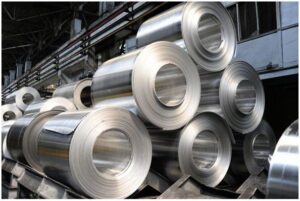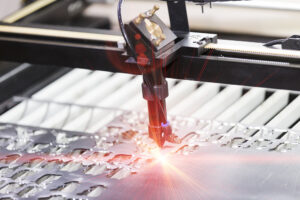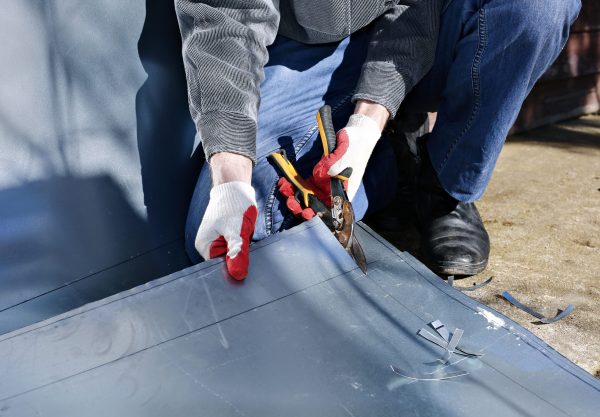How to Achieve Perfect Finishes in Stainless Steel Fabrication
Stainless steel is known to be the most sought-after material in commercial and industrial applications. The exclusive features of stainless steel, including its strength, aesthetic appeal, and corrosion resistance attract the consumers. However, achieving an ideal finish in stainless steel fabrication needs precision, tight techniques, and skill. Whether you are working on kitchen equipment, industrial components or architectural structures, understanding the finishing procedure is essential for both functionality and aesthetics.

This blog will explain the main steps, provide real-world examples, and share best practices for achieving high-quality stainless-steel finishes.
Understanding stainless steel finishes
Stainless steel finishes depend on its application, and selecting the proper one is essential to achieve the desired performance and look. Some common types are mentioned below:
- Mill finish – the basic, unfinished look usually used for industrial applications.
- Brushed finish – the smooth, satin-like finish made for architecture, food processing, and appliances.
- Mirror finish – It is extremely reflective surface made for decorative and high-end applications.
- Electropolished finish – corrosion-resistant and smooth finish, perfect for pharmaceutical and medical industries.
- Bead blasted finish – the uniform matte texture achieved through abrasive blasting.
Major steps for achieving ideal finish
- Proper surface preparation
Before finishing stainless steel, it is important to make the surface properly:
- Removing dirt, cleaning grease, and contaminants using degreasing solvent.
- Deburring with abrasives or wire brushes to diminish rough edges.
- In welding, remove oxidation and discoloration with mechanical grinding and pickling paste.
- The right abrasive
The quality of the finish depends remarkably on the abrasive used. Common options are:
- Coated abrasive (Sandpaper, Flap discs): Best for smoothing rough edges.
- Non-woven abrasives: perfect for finishing and blending.
- Scotch-Brite pads: Used for attaining a uniform brushed finish.
- Diamond polishing pads: Needed for mirror finishes or high-gloss.
- Sanding and grinding
For a perfect flawless finish, a progressive sanding process is followed:

- Begin with a coarse grit (60 – 120) to eliminate surface defects.
- Move to medium grit (180 – 240) for refining the surface.
- Final step with fine grit (320 – 600) for a smooth appearance.
- For the ultra-fine finish, use a polishing compound.
- Polishing and buffing
In case you demand a mirror-like finish after stainless steel fabrication, use:
- Polishing compounds – To enhance reflectivity, apply with buffing wheels.
- Electropolishing – The chemical process that smooths the surface at a microscopic level.
- Mechanical buffing – Achieves high luster using soft cloth wheels.
- Protective coatings and maintenance
Once the required finish is achieved, applying the protective layer increases durability. Best opinions include:
- Passivation: Includes treating the stainless steel with the acid solution to remove impurities and enhance corrosion resistance.
- Clear coatings: Prevent smudges and fingerprints for the high-touch areas.
- Regular cleaning: Use non-abrasive cleaners for maintaining the finish over time.
Real-world examples of stainless-steel finishing
- Architectural stainless steel
A renowned architectural firm used #8 mirror-finish stainless steel panels for the façade of a luxury hotel. Electropolishing the panels achieved a flawless, extremely reflective surface that increased the building’s modern aesthetic.
- Food processing equipment
Multiple restaurant chains required a sanitary stainless steel surface for their food preparation areas. Using a brushed finish, they assured easy cleaning, compliance with hygiene standards, and scratch resistance.
- Medical instruments
The medical device manufacturer employed electropolishing to make ultra-smooth surfaces on surgical instruments. This not only makes the instruments corrosion resistant but also eliminates the risk of bacterial contamination.
- Automotive and aerospace components
The high-performance car manufacturer used bead blasting to attain a matte finish on exhaust systems. This procedure enhanced durability while giving the vehicle a sleek, modern look.
FAQs About Stainless Steel Finishing
- What is the best finish for outdoor stainless steel structures?
A brushed or electropolished finish is ideal for outdoor applications. These finishes provide excellent resistance to corrosion and weathering while maintaining a sleek appearance.
- How can I remove scratches from stainless steel surfaces?
Minor scratches can be removed using fine-grit sandpaper or non-woven abrasive pads. For deeper scratches, professional refinishing with buffing compounds may be required.
- Why does my stainless steel finish have discoloration after welding?
Welding discoloration occurs due to oxidation. It can be removed using pickling paste, mechanical grinding, or electropolishing.
- What is the most durable stainless steel finish for industrial applications?
Electropolishing is the best option for durability in industrial applications, as it smooths the surface, enhances corrosion resistance, and improves longevity.
Final thoughts
The perfect finish during stainless steel fabrication needs the proper techniques, expertise, and tools. Through an appropriate understanding of surface preparation, polishing methods, protective coatings, and abrasive selection, you can assure a flawless result tailored to your particular needs. If you are working on medical instruments, designing automotive parts or architectural designs, a well-executed stainless steel finish increases aesthetics and performance.
For high-quality stainless steel fabrication services, trust Cresco to deliver exceptional results. Contact the expert team today to discuss your project’s requirements and achieve the best finishes on stainless steel.


